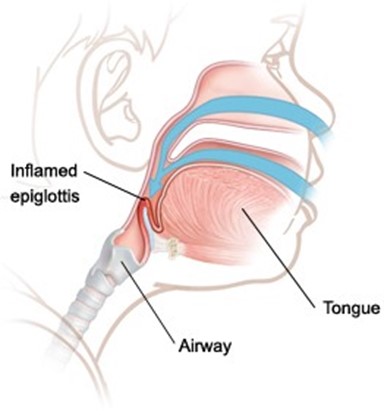A 25-year-old gravida 2, para 2-0-0-2 gave birth 4 hours ago to a 9-lb, 7-ounce boy after augmentation of labor with Pitocin.
She puts on her call light and asks for her nurse right away, stating, “I’m bleeding a lot.” The most likely cause of afterbirth hemorrhage in this woman is:
Retained placental fragments.
Unrepaired vaginal lacerations.
Uterine atony
Puerperal infection
The Correct Answer is C
Uterine atony.
This is when the uterus does not contract enough to stop the bleeding from the placental site after delivery. It is the most common cause of postpartum hemorrhage, accounting for up to 80% of cases. Uterine atony can be caused by factors such as prolonged or augmented labor, large baby, multiple pregnancies, infection, or retained placenta.
The woman in question has some risk factors for uterine atony, such as a large baby and augmentation of labor with Pitocin.
The other choices are wrong because:
A . Retained placental fragments: This is when parts of the placenta remain attached to the uterine wall and prevent it from contracting properly. It is the second most common cause of postpartum hemorrhage.
However, there is no indication in the question that the woman had any difficulty with the delivery of the placenta or that it was incomplete
B. Unrepaired vaginal lacerations: This is when there are tears or cuts in the vagina or cervix that cause bleeding. It is a less common cause of postpartum hemorrhage.
However, there is no indication in the question that the woman had any trauma during delivery or that she was examined for lacerations
D. Puerperal infection: This is when there is an infection in the uterus or other parts of the reproductive tract after delivery.
It can cause fever, pain, and bleeding. It is a rare cause of postpartum hemorrhage.
However, there is no indication in the question that the woman had any signs or symptoms of infection, such as fever, chills, or foul-smelling discharge.
Normal ranges for blood loss after delivery are less than 500 mL for vaginal birth and less than 1000 mL for C-section.
Any amount above these thresholds can be considered postpartum hemorrhage and requires prompt evaluation and treatment.
Nursing Test Bank
Naxlex Comprehensive Predictor Exams
Related Questions
Correct Answer is B
Explanation
If a child has acute epiglottitis, examination of the throat may cause complete obstruction and should be performed only when immediate intubation can take place.

This is because the inflamed epiglottis can block the airway and cause respiratory distress or failure.
Choice A is wrong because inspiratory stridor is a sign of upper airway obstruction that is aggravated when a child with epiglottitis is supine.
It is not caused by examining the throat with a tongue depressor.
Choice C is wrong because sore throat and pain on swallowing are early signs of epiglottitis, not precipitated by examining the throat with a tongue depressor.
Choice D is wrong because respiratory tract infection is the cause of epiglottitis, not a symptom or condition that is precipitated by examining the throat with a tongue depressor.
Epiglottitis is caused by H. influenzae in the respiratory tract.
Correct Answer is ["A","C","D","E","F"]
Explanation
A health history is a holistic assessment of all factors affecting a patient’s health status, including information about social, cultural, familial, and economic aspects of the patient’s life as well as any other component of the patient’s life style that affects health and well-being.
Choice B is wrong because physical assessment is not part of the health history, but a separate process of examining the patient’s body systems.
Choice A is correct because review of systems is a systematic method of collecting data on all body systems.
Choice C is correct because sexual history is an important aspect of the patient’s health that may affect their risk for sexually transmitted infections, reproductive health, and psychosocial well-being.
Choice D is correct because height, weight, BMI data are part of the biographical data that provide a baseline for comparing the patient’s characteristics to established norms for physical and emotional health.
Choice E is correct because diet and nutritional intake are relevant factors that influence the patient’s health status and may indicate potential problems such as malnutrition, obesity, or eating disorders.
Choice F is correct because family medical history provides information about the patient’s genetic risk for certain diseases and conditions that may affect their current or future health.
Whether you are a student looking to ace your exams or a practicing nurse seeking to enhance your expertise , our nursing education contents will empower you with the confidence and competence to make a difference in the lives of patients and become a respected leader in the healthcare field.
Visit Naxlex, invest in your future and unlock endless possibilities with our unparalleled nursing education contents today
Report Wrong Answer on the Current Question
Do you disagree with the answer? If yes, what is your expected answer? Explain.
Kindly be descriptive with the issue you are facing.
